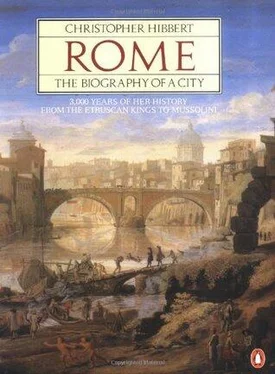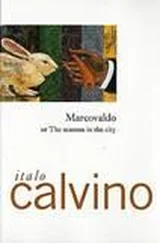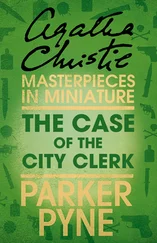Christopher Hibbert - Rome. The Biography of the City
Здесь есть возможность читать онлайн «Christopher Hibbert - Rome. The Biography of the City» весь текст электронной книги совершенно бесплатно (целиком полную версию без сокращений). В некоторых случаях можно слушать аудио, скачать через торрент в формате fb2 и присутствует краткое содержание. Жанр: Культурология, Искусство и Дизайн, на английском языке. Описание произведения, (предисловие) а так же отзывы посетителей доступны на портале библиотеки ЛибКат.
- Название:Rome. The Biography of the City
- Автор:
- Жанр:
- Год:неизвестен
- ISBN:нет данных
- Рейтинг книги:3 / 5. Голосов: 1
-
Избранное:Добавить в избранное
- Отзывы:
-
Ваша оценка:
- 60
- 1
- 2
- 3
- 4
- 5
Rome. The Biography of the City: краткое содержание, описание и аннотация
Предлагаем к чтению аннотацию, описание, краткое содержание или предисловие (зависит от того, что написал сам автор книги «Rome. The Biography of the City»). Если вы не нашли необходимую информацию о книге — напишите в комментариях, мы постараемся отыскать её.
Rome. The Biography of the City — читать онлайн бесплатно полную книгу (весь текст) целиком
Ниже представлен текст книги, разбитый по страницам. Система сохранения места последней прочитанной страницы, позволяет с удобством читать онлайн бесплатно книгу «Rome. The Biography of the City», без необходимости каждый раз заново искать на чём Вы остановились. Поставьте закладку, и сможете в любой момент перейти на страницу, на которой закончили чтение.
Интервал:
Закладка:
Yet, despite the casual manner in which the inhabitants treated a large part of their heritage, no visitor to Rome could be unaware of the influence which the ancient city had had upon the medieval, nor, despite depredation and neglect, how much of imperial Rome remained. A celebrated guidebook, the Mirabilia , written in these years by a canon of St Peter's, draws the stranger's attention not only to the Christian treasures of the city but also, with a sense of awe and wonder, to its pagan antiquities. A number of these were displayed outside the Lateran Palace where, beside groups of now unidentifiable classical bronzes, could be seen the equestrian statue of Marcus Aurelius; the head and hand of the colossal image of Constantine placed upon high columns, 22a bronze tablet upon which was incribed part of a decree by which the Roman people transferred Augustus's imperial authority to Vespasian; 23the bronze sculpture of a boy picking a thorn from his foot; 24and the lupa, the she-wolf, symbol of early Rome, which had been struck by lightning in 65 B.C. when it stood on the Capitol. 25Moreover, while most ancient monuments had been pilfered for building materials, and while parts of others, including even statues, had been thrown into the lime kilns, many antiquities had been saved by the Church or the Senate from further damage or appropriation. Trajan's Column, for example, had been preserved by the Senate who decreed that it should ‘never be mutilated or destroyed, but should remain as it stands to the honour of the Roman people, as long as the world endures. Anyone daring to injure it shall be punished by death and his property shall fall to the Treasury.’ Similarly, the monks of S. Silvestro in Capite, 26who had acquired the Column of Marcus Aurelius, declared that ‘anyone taking the column by force from our convent shall be eternally damned as a spoiler of the Temple, and shall be encompassed by the everlasting anathema. So be it.’
Other monuments, dilapidated and collapsed, had been repaired and re-erected, like the obelisk which is now at the Villa Mattei on the Caelian. 27This was restored and placed on the Capitol near the Palazzo del Senatore 28which itself, like the earlier Casa di Crescenzio, 29was a medieval structure reflecting a deep reverence for classical antiquity. And those responsible for these repairs were proud to inscribe their names, in the manner of their ancient forebears, upon the works for which they had been responsible: on walls and bridges can still be read such inscriptions as that of 1191–3 on the Pons Cestius, ‘Benedictus [Benedict Carushomo], Chief Senator of the Illustrious City, restored this almost entirely ruined bridge.’
When Honorius III died in 1227 to be succeeded by Francis of Assisi's friend, Gregory IX, the quarrel with the German Emperor, now Frederick II, over papal authority broke out afresh and was still unresolved on the death of the Emperor in 1250. At the same time, the city of Rome became more aggressive in its demands, particularly its financial demands, upon the papacy. These were most forcefully and successfully expressed after the appointment of the Bolognese Brancaleone di Andalò as a professional and highly paid Senator in 1252. Brancaleone, a tough and resolute personality, as well as subduing the power of the papacy in the city, also succeeded in keeping the meddlesome Roman families in order, demolishing no fewer than 140 of their fortified towers and hanging two pugnacious Annibaldi. But after the death of Brancaleone, whose head was placed in an antique vase and displayed as a valuable relic on a marble pillar on the Capitol until removed by the Church, Rome once again became an intermittent battleground with the Pope's supporters fighting his rivals in the streets, and the controversy over papal supremacy raging more fiercely than ever. And it was not until Charles of Anjou, a grim younger brother of the King of France and since 1283 himself King of Naples and Sicily, came to the protection of the Pope that some sort of order was restored. For the papacy, however, and ultimately for Rome, order was bought at a high price. Once the authority of the French king was established in Rome, Charles, who had had himself appointed Senator, tried to ensure that the popes thereafter elected were either sympathetic to France or, like Innocent V, were actually French. But the consequences of this foreign dominance did not at first become apparent. In 1277 an Italian of noble birth, Giovanni Gaetano Orsini, was elected; and although he was followed by a Frenchman, his subsequent successors, up till Boniface VIII, were all Italian: Honorius IV was a Savelli, Nicholas IV a Masci of Ascoli and Boniface VIII a Caetani of Anagni.
Under these Italian popes the Church increased its wealth, as legal fees and bribes, payments for benefices and offices, tithes and donations poured into Rome, and as pilgrims showered handfuls of money upon the holy shrines. Bankers, innkeepers and traders prospered too, particularly in 1300, which Boniface VIII proclaimed the first Holy Year.
The profits made by the people of Rome that year were incalculable. One visitor ‘saw so large a party of pilgrims depart on Christmas Eve that no one could count the numbers. The Romans reckon,’ he continued, ‘that altogether they have had two millions of men and women. I frequently saw both sexes trodden underfoot, and it was sometimes with difficulty that I escaped the same danger myself.’ Day and night the streets were packed with people, lining up to pass through the churches; to see the shrines and the most famous relics; to gaze with reverence upon the handkerchief with which St Veronica wiped the sweat from Christ's face on his way to Calvary and which still bore the image of his features; to throw coins upon the altar of S. Paolo fuori le Mura, where two priests remained constantly on duty with rakes in hand to gather up the scattered offerings; to buy the relics, amulets, mementoes and pictures of saints whose sale brought such profits to the street-vendors of Rome.
Also prospering in these last decades of the thirteenth century were the artists and craftsmen at work in the city, helping to fulfil the ambitions of the popes and their families who hoped to make Rome worthy of her past, a place which would rival and even surpass in beauty Florence and the other cities of Tuscany, while remaining within a conservative tradition that looked warily upon the Gothic innovations in architecture spreading south from beyond the Alps. Numerous churches were completely redecorated at this time. St Peter's, S. Paolo fuori le Mura and S. Maria Maggiore were remodelled and the Lateran Palace and Basilica reconstructed. Splendid tombs and sepulchral monuments were created. Painters, sculptors, jewellers, goldsmiths and workers in mosaics and marble were all kept busy, as clergy and laity alike displayed their taste in extravagant and ostentatious rivalry. Cimabue and Arnolfo di Cambio came down from Florence. Giotto was sent for to work at St Peter's and at the opulent new palace at the Vatican which took the place of the more modest residence built by Innocent III. Artists born or long resident in Rome were fully employed as well. Pietro Cavallini worked at the Lateran and St Peter's, at S. Paolo fuori le Mura, S. Cecilia, S. Giorgio in Velabro and S. Maria in Trastevere. Jacopo Torriti was employed on the mosaics at the Lateran Basilica and at S. Maria Maggiore where he was helped by Filippo Rusuti.
But soon this brief flurry of artistic activity came to an abrupt halt, for the supposed financial and political security of Rome proved to be illusory. Charles of Anjou was dead and the Angevin influence in Rome eliminated. Yet France was still unwilling to accept the claims made for the papacy by Boniface VIII who, repeating those of Innocent III, declared in his bull Unam Sanctam that ‘if the earthly power err it shall be judged by the spiritual power’. Dispensing excommunication after excommunication to gain obedience to his demands, Boniface enraged the monarchs of the West, and in particular King Philip IV of France. He was about to excommunicate Philip when the French legate in Italy, abetted by the Colonna family whose estates the Pope had appropriated, invaded the papal palace at Anagni and carried him off into captivity. Humiliated and ill treated, Boniface was allowed to return to Rome where he died soon afterwards. He was briefly succeeded by the inadequate Italian, Benedict XI, but in 1305, through the manipulation of the French king, the Frenchman Bertrand de Got became Pope as Clement V and secured a succession of subsequent French popes by creating a majority of French cardinals. Required by his master, Philip, to annul Boniface's bull Unam Sanctam, Clement abandoned Rome in 1308 and moved the papal residence to Avignon. For sixty-eight years French popes were to conduct the affairs of the Church from their new centre in the south of France, in what became known as the Babylonian Captivity; and Rome, abandoned also by the artists whose patrons had deserted them, sank once more into anarchy.
Читать дальшеИнтервал:
Закладка:
Похожие книги на «Rome. The Biography of the City»
Представляем Вашему вниманию похожие книги на «Rome. The Biography of the City» списком для выбора. Мы отобрали схожую по названию и смыслу литературу в надежде предоставить читателям больше вариантов отыскать новые, интересные, ещё непрочитанные произведения.
Обсуждение, отзывы о книге «Rome. The Biography of the City» и просто собственные мнения читателей. Оставьте ваши комментарии, напишите, что Вы думаете о произведении, его смысле или главных героях. Укажите что конкретно понравилось, а что нет, и почему Вы так считаете.












